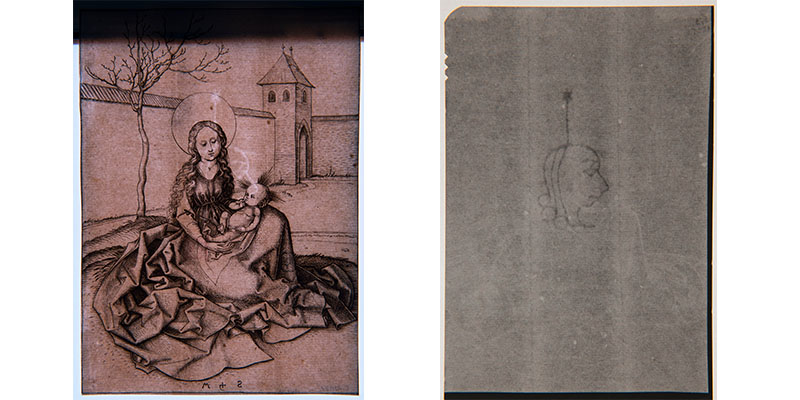- Events & Programs Home
- Calendar
- Accessibility
- Adults
-
Families & Teens
- Families & Teens Home
- 10x10 Teen Art Expo
- Art on the Rise
- Art Together: Art Making for Families with Children Ages 3–5
- Babies Sing with May Festival Minis
- Boy Scouts / Girl Scouts
- CAM Kids Day
- Family Storytime and Gallery Walk
- Family Studio: Art Making for Families with Children Ages 6–12
- Games in the Galleries
- Members-Only Baby Tours
- Public Baby Tours
- REC Reads
- Rosenthal Education Center (REC)
- Saturday Morning Art Class
- See Play Learn Kits
- Summer Camp
- Teen Fest: Zine and Comic Exchange
- RECreate
- Teachers
- Community Outreach
- Fundraisers
- Plan Your Own Event

- Events & Programs Home
- Calendar
- Accessibility
- Adults
-
Families & Teens
- Families & Teens Home
- 10x10 Teen Art Expo
- Art on the Rise
- Art Together: Art Making for Families with Children Ages 3–5
- Babies Sing with May Festival Minis
- Boy Scouts / Girl Scouts
- CAM Kids Day
- Family Storytime and Gallery Walk
- Family Studio: Art Making for Families with Children Ages 6–12
- Games in the Galleries
- Members-Only Baby Tours
- Public Baby Tours
- REC Reads
- Rosenthal Education Center (REC)
- Saturday Morning Art Class
- See Play Learn Kits
- Summer Camp
- Teen Fest: Zine and Comic Exchange
- RECreate
- Teachers
- Community Outreach
- Fundraisers
- Plan Your Own Event
Blog: CAM Uncovered
Blog: CAM Uncovered
- Home
- Plan Your Visit
- Art
-
Events & Programs
- Events & Programs Home
- Calendar
- Accessibility
- Adults
-
Families & Teens
- Families & Teens Home
- 10x10 Teen Art Expo
- Art on the Rise
- Art Together: Art Making for Families with Children Ages 3–5
- Babies Sing with May Festival Minis
- Boy Scouts / Girl Scouts
- CAM Kids Day
- Family Storytime and Gallery Walk
- Family Studio: Art Making for Families with Children Ages 6–12
- Games in the Galleries
- Members-Only Baby Tours
- Public Baby Tours
- REC Reads
- Rosenthal Education Center (REC)
- Saturday Morning Art Class
- See Play Learn Kits
- Summer Camp
- Teen Fest: Zine and Comic Exchange
- RECreate
- Teachers
- Community Outreach
- Fundraisers
- Plan Your Own Event
- Give & Join
- About
- Tickets
- Calendar
- Exhibitions
- Collections
- Blog
- Shop
Behind the Scenes in Conservation: Recording Watermarks
by Conservation
3/19/2020
Martin Schongauer , beta radiography , watermarks , paper conservation , transmitted light

1. transmitted light, 2. Beta-radiograph
Martin Schongauer (German, b. Circa 1445-1450, d.1491), The Virgin and Child in a Courtyard, engraving on paper, no date, Bequest of Herbert Greer French, 1943.78
Our paper conservator has been in the darkroom capturing images of watermarks from some of our Old Master prints. The prints, created in the 15th and 16th centuries in Europe, were made on handmade papers that were made on wire molds. Images of the wires can be seen when the papers are viewed in transmitted light, when the paper is viewed on a lightbox and the light is transmitted through the paper. The watermarks are created by designs sewn with wire onto the wire papermaking screens. They can help identify where and when the papers were made and can even help determine if the prints were made during the artist’s lifetime. Some of the paper mills had identifiable watermarks, but many are not easy to connect to a specific mill.
The printed images can obscure the watermarks, so simply looking at the prints on a light box does not always give researchers the best picture. Shown here are images of a print viewed on a light box and an image of the same print made with Beta radiography. Similar to an X-radiograph, a Beta-radiograph film is created by exposing the print and film to low energy radiation, then processing the film in a darkroom. Only the darkest black ink printing shows up, as faint white lines, allowing the watermarks to be fully visible. In this example, the Beta-radiograph clearly shows a watermark in the center of the sheet, a head in profile and a star. Perhaps this will lead to an identification of the paper mill by art historical researchers.
Cincinnati, OH 45202
Toll Free: 1 (877) 472-4226
Museum Hours
Museum Shop
Terrace Café
Library
Cincinnati Art Museum is supported by the tens of thousands of people who give generously to the annual ArtsWave Campaign, the region's primary source for arts funding.

Free general admission to the Cincinnati Art Museum is made possible by a gift from the Rosenthal Family Foundation. Exhibition pricing may vary. Parking at the Cincinnati Art Museum is free.
Generous support for our extended Thursday hours is provided by Art Bridges Foundation’s Access for All program.

General operating support provided by:



